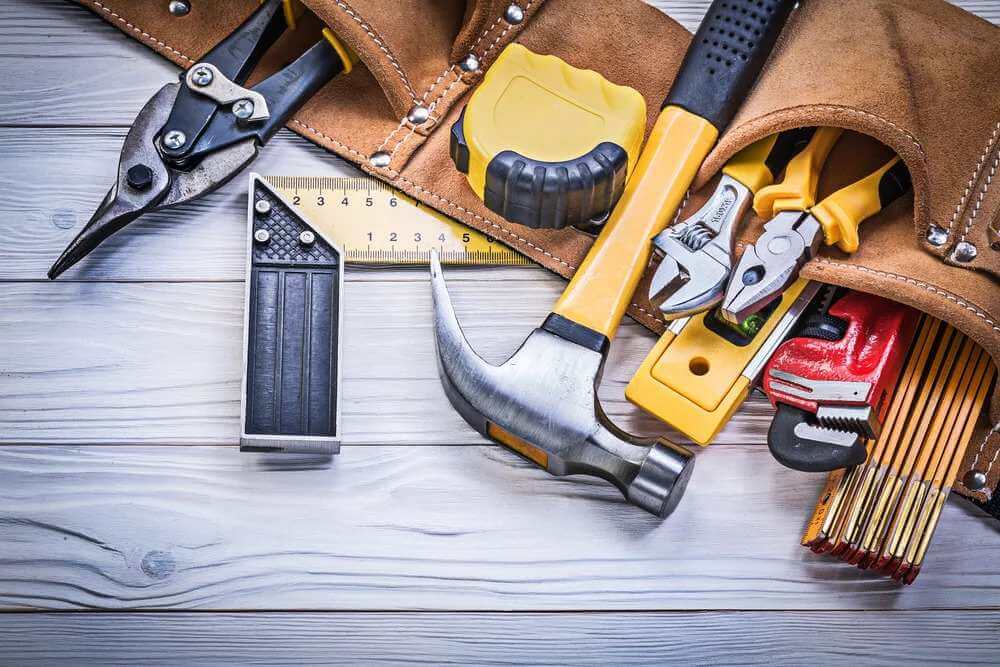Investing in a building, whether it’s a residential property, commercial space, or industrial facility, is a significant financial undertaking. To protect and maximize the value of this investment over the long term, regular building maintenance is paramount. Neglecting maintenance not only leads to deteriorating conditions but also results in higher costs and potential safety hazards. In this article, we’ll delve into the importance of regular building maintenance and its role in safeguarding your valuable asset.
Preserving Structural Integrity
One of the primary reasons for regular building maintenance is to preserve the structural integrity of the property. Buildings are exposed to various environmental factors such as weather, temperature fluctuations, moisture, and pests. Over time, these factors can weaken the building’s foundation, walls, roof, and other critical components. Regular inspections and upkeep allow you to identify and address issues early on, preventing them from escalating into major structural problems that are not only costly to fix but also compromise the safety of occupants.
Extending Longevity
Just as cars require regular servicing to ensure optimal performance and longevity, buildings also need consistent care to extend their lifespan. Every component, from plumbing and electrical systems to HVAC units and exterior surfaces, undergoes wear and tear. By conducting routine maintenance, you can address minor problems before they lead to significant breakdowns, thereby avoiding premature replacements and costly repairs.
Cost-Efficiency
Ironically, one of the main reasons people overlook building maintenance is to save costs. However, this approach often backfires. Delaying necessary repairs and maintenance might seem like a short-term financial gain, but it leads to higher expenses in the long run. Small issues that could have been fixed inexpensively can quickly escalate into major problems that require substantial funds to rectify. By investing in regular maintenance, you’ll be minimizing the risk of sudden, costly repairs and replacements.
Enhancing Energy Efficiency
Energy efficiency is a growing concern in today’s world. Regular building maintenance contributes to energy efficiency by ensuring that systems like HVAC, insulation, and windows are in good working condition. Leaky windows, inefficient insulation, and malfunctioning HVAC systems can result in energy wastage, driving up utility bills and harming the environment. Routine maintenance helps identify areas where improvements can be made to enhance the building’s energy performance.
Maintaining Aesthetics and Appeal
The visual appeal of a building plays a significant role in its value and tenant attraction. Regular maintenance not only addresses functional aspects but also ensures that the building maintains its aesthetic charm. Exterior elements like paint, landscaping, and signage can become worn or outdated, affecting the overall impression the building makes on visitors, clients, and potential buyers or tenants. Keeping up with routine maintenance tasks like painting, cleaning, and landscaping can significantly enhance the curb appeal of your property.
Ensuring Safety

Safety should always be a top priority when it comes to buildings, whether they are residential, commercial, or industrial. Neglected maintenance can lead to safety hazards such as electrical fires, gas leaks, structural collapses, and more. Regular inspections of electrical systems, fire safety equipment, elevators, and emergency exits help identify and rectify potential dangers before they can cause harm to occupants or property.
In the realm of building ownership, regular maintenance is not just a routine chore; it’s a strategic investment in your property’s future. By safeguarding the structural integrity, extending the building’s longevity, enhancing energy efficiency, and ensuring safety, regular maintenance not only protects your investment but also saves you money and headaches in the long run. Prioritizing maintenance as an ongoing process will undoubtedly contribute to the overall success and value of your property over time.
Creating a Maintenance Schedule: A Practical Approach to Building Care
Owning a building is a long-term commitment that requires consistent care and attention. Much like how we schedule regular health check-ups to maintain our well-being, buildings also benefit from a structured maintenance schedule. In this article, we’ll explore the key elements of creating an effective building maintenance schedule and how it contributes to the overall preservation and value of your property.
1. Identifying Maintenance Needs: Before drafting a maintenance schedule, conduct a thorough assessment of your building. Identify its components, systems, and areas that require regular upkeep. This could range from HVAC systems, plumbing, electrical systems, roofing, windows, doors, and landscaping.
2. Setting Priorities: Not all maintenance tasks are of equal urgency. Categorize your maintenance needs based on their importance and the potential impact on the building’s functionality, safety, and aesthetics. This will help you allocate resources more efficiently.
3. Establishing Frequencies: Different building components have varying lifespans and maintenance requirements. Some tasks may need to be performed monthly, quarterly, annually, or on a different schedule. For instance, HVAC systems might require monthly filter changes, while roof inspections can be done annually.
4. Considering Seasons: Certain maintenance tasks are best suited to specific seasons. For example, it’s advisable to inspect and clean gutters before the rainy season to prevent water damage. Understanding the seasonal needs of your building helps in creating a well-rounded maintenance schedule.
5. Documentation: Keep a detailed record of all maintenance activities, including dates, tasks performed, and any issues discovered. This documentation serves as a reference for future inspections and provides valuable insights into the building’s history of upkeep.
6. Budget Allocation: Maintenance involves costs, and it’s essential to allocate a budget that covers routine tasks, unexpected repairs, and potential upgrades. Creating a financial plan helps in managing expenses and ensuring that maintenance remains a sustainable practice.
7. Professional Expertise: While some maintenance tasks can be handled in-house, others require specialized skills and knowledge. Collaborate with professionals such as plumbers, electricians, HVAC technicians, and landscapers to ensure that complex maintenance needs are met adequately.
8. Flexibility: A maintenance schedule should be adaptable to changing circumstances. Unexpected issues may arise that require immediate attention, potentially shifting other tasks. Flexibility ensures that your building remains well-maintained even in unpredictable situations.
9. Tenant Communication: If your building is occupied by tenants, keep them informed about scheduled maintenance activities. Clear communication not only demonstrates your commitment to the property’s upkeep but also helps tenants prepare for any inconveniences that might arise during maintenance.
10. Evolving the Schedule: Over time, your building’s needs might change. New technologies, regulations, or usage patterns can impact maintenance requirements. Regularly review and update your maintenance schedule to ensure it remains relevant and effective.
Creating a maintenance schedule is not just about following a routine; it’s a proactive approach to ensuring the longevity, safety, and value of your building. By identifying needs, setting priorities, and establishing frequencies, you’re effectively safeguarding your investment against wear and tear. Remember, a well-maintained building not only enhances its aesthetic appeal but also contributes to a safer, more efficient, and financially viable property for years to come.
Embracing Technology: The Modern Approach to Building Maintenance
In the rapidly evolving landscape of building management, technology has emerged as a game-changer, revolutionizing the way maintenance is planned, executed, and tracked. This article explores the transformative impact of technology on building maintenance, highlighting its benefits, innovative solutions, and the potential it holds for streamlining the upkeep of your valuable asset.
**1. Smart Building Management Systems: Smart building technology integrates various systems within a building, such as HVAC, lighting, security, and even appliances, into a centralized platform. This allows for remote monitoring, automation, and control, ensuring optimal performance and energy efficiency. These systems can automatically alert maintenance teams to potential issues, enabling proactive responses.
**2. IoT Sensors and Predictive Maintenance: Internet of Things (IoT) sensors are embedded in building systems to collect data on their performance. Analyzing this data helps predict when components might fail, enabling maintenance teams to address issues before they escalate. This predictive approach minimizes downtime and reduces the risk of unexpected breakdowns.
**3. Computerized Maintenance Management Systems (CMMS): CMMS software streamlines the planning, scheduling, and execution of maintenance tasks. It provides a comprehensive view of maintenance needs, tracks work orders, manages inventory, and generates reports. This level of organization enhances efficiency and reduces manual errors.
**4. Virtual Reality (VR) and Augmented Reality (AR): VR and AR technologies are being utilized for training maintenance staff and conducting remote inspections. Technicians can receive real-time guidance through AR overlays while working on complex systems, enhancing accuracy and speed in troubleshooting.
**5. Drones for Inspections: Drones equipped with cameras and sensors can conduct visual inspections of hard-to-reach areas, such as rooftops and façades. This technology offers a cost-effective and efficient way to identify maintenance needs in inaccessible parts of a building.
**6. Energy Management Solutions: Building maintenance isn’t just about fixing issues; it’s also about optimizing energy consumption. Energy management software can analyze energy usage patterns and provide insights on how to reduce costs and improve efficiency.
**7. Cloud-Based Collaboration: Cloud platforms enable maintenance teams, property managers, and contractors to collaborate seamlessly. Documents, work orders, and progress reports can be accessed and updated in real-time, improving communication and coordination.
**8. Mobile Apps: Mobile apps empower maintenance teams to receive and update work orders on the go. They can also use mobile devices to scan QR codes for easy access to equipment manuals, maintenance histories, and troubleshooting guides.
**9. Data-Driven Decision-Making: Technology generates a wealth of data that can be used to make informed decisions about maintenance strategies. By analyzing trends and patterns, building owners can allocate resources more effectively and implement preventive measures.
**10. Enhanced Tenant Experience: Smart building technology can improve the tenant experience by offering features like mobile-controlled temperature settings, automated lighting, and even app-based maintenance request submissions. This not only enhances tenant satisfaction but also simplifies communication between tenants and property management.
Conclusion
Embracing technology in building maintenance isn’t just a trend; it’s a necessity in a world driven by innovation. From predictive maintenance to IoT sensors and smart building systems, technology offers practical solutions that enhance efficiency, reduce costs, and extend the lifespan of your property. By integrating these advanced tools and systems into your maintenance strategy, you’ll be better equipped to navigate the evolving landscape of building management and safeguard your investment for years to come.





